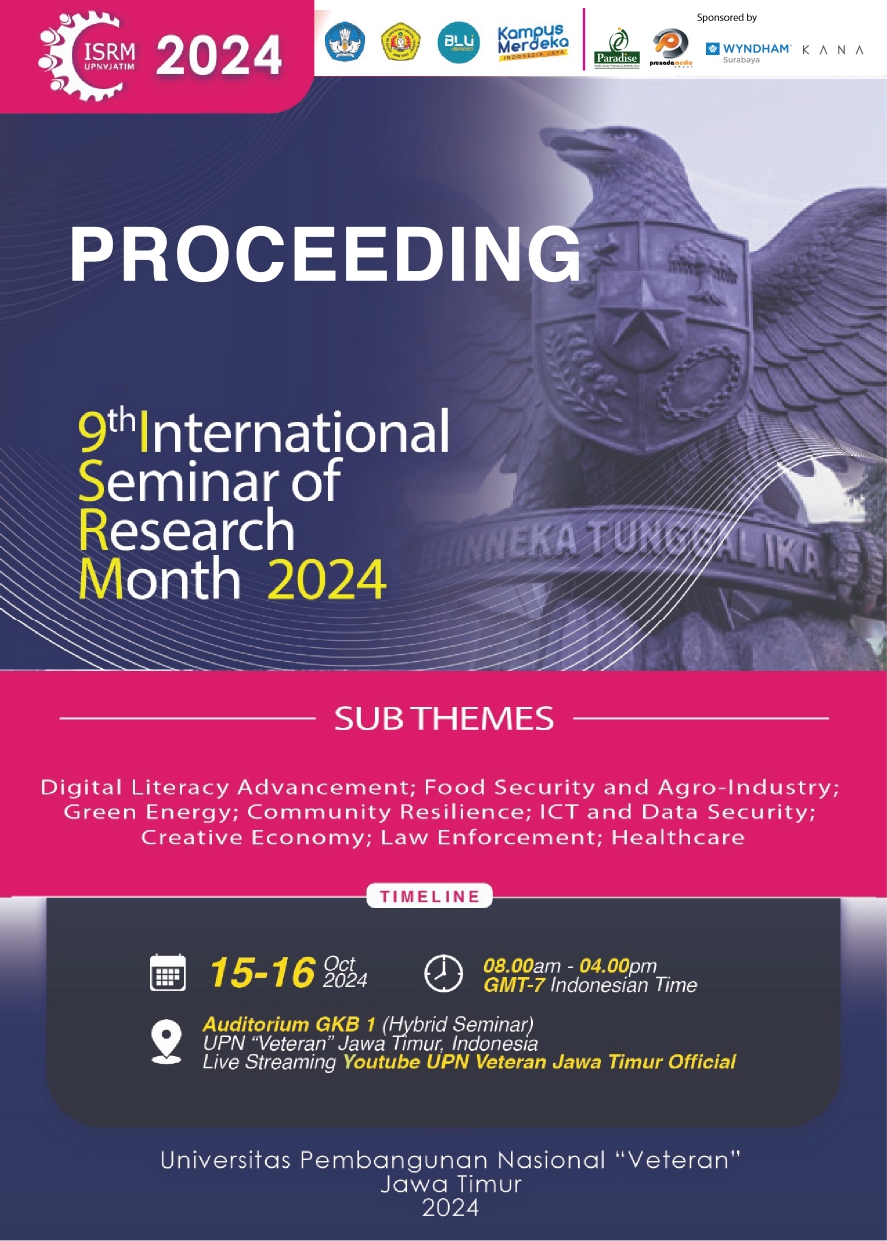Development of Vitorial for Ukel Bend Traditional Hair and Bun Style’s
DOI:
https://doi.org/10.11594/nstp.2025.47140Keywords:
Vitorial, hair styling and a bent ukel bunAbstract
This study aims to describe the process of vitorial development (video tutorial) for deaf children with special needs (ABK) in learning traditional hair styling and buns in the S1 Cosmetology Education study program, the State University of Surabaya. Data collection was carried out by research and development (R&D) methods through the ADDIE model. Based on material and media experts, the feasibility level is 96,81% and 94,72%, respectively, illustrating that vitorials are very feasible to use. In small group and field trials, the vitorial score was between 4,11 and 4,02, meaning that the vitorial was well developed and feasible for learning the hairstyle and bun of the bent ukel in the university. Innovation in the development of vitorial media is expected to be able to make learning activities more interesting and innovative.
Downloads
References
Andiyanto, D. (2010). Creation Series bun. Jakarta: PT. Main Library Gramedia
Augustine. 2020. Development of learning videos for upgrade motivation learn student using R&D models. Journal Scientific Education and Learning, 4(1), 62-78
Batubara, H. H., & Ariani, D. N. (2016). Pemanfaatan Video sebagai Media Pembelajaran Matematika SD/MI. Muallimuna: Journal of Madrasah Ibtidaiyah, 2(1), 47. https://doi.org/10.31602/muallimuna.v2i1.741
Bustanil, M., Asrowi, & Ardianto, D. T. (2019). Development of Learning Media Interactive Based on video tutorials at school medium vocational school. JTP- Journal Educational Technology.
Cheung, L. (2016). Using the ADDIE Model of Instructional Design to Teach Chest Radiograph Interpretation. Journal of Biomedical Education, 2016(2), 1-6. DOI:10.1155/2016/9502572
Daughter, E. G. (2014). Development of skill subject video media embroider for students mentally disabled Light class XII in Outer High School Ordinary State 1 Yogyakarta. Thesis. Yogyakarta: Department of Fashion Engineering, FT UNY Yogyakarta
Dewi, W. A. F. (2020). Impact of covid 19 on implementation online learning at school basic. Educational: Journal Educational Sciences, 2(1). https://doi.org/10.31004/edukatif.v2i1.89ran
Fitria, A. et al. (2017). Application of Video Tutorial -based Media for Upgrade results study make hem student class X SMK Negeri 1 Strabat. Journal of Fashion Education, 33-34.
Hadi, S. (2017). Effectiveness use of video as a medium. 21st Century Education Transformation.
Hagen, A. V. (2000). Course refreshment of deaf children's education method reflective mother language teaching. Wonosobo: Dena- Upakara and Karya Foundation devotion.
Kalogiannakis, M., & S. Papadakis. (2020). Uses application mobile development for preparing pre-service teachers for promote STEM activities in the classroom preschool. Application Learning Mobile in Early Childhood Education, Hershey: IGI Global, 82–100.
Kustandi, C., & Sutjipto, B. (2013). Manual & digital edition learning media second. Bogor: Ghalia Indonesia.
Lestari, I., Maksum, A., & Kustandi, C. (2019). Mobile learning design models for State University of Jakarta, Indonesia. International Journal of Interactive Mobile Technologies (iJIM), 13(09), 152–171. https://doi.org/10.3991/ijim.v13i09.10987
Maheswari, K. (2021). Development of sewing technique video tutorial learning media hair eyes and mounting scot eye on competence geriatric make-up base.
Maslowski, R., & AJ Visscher, A. J. (1999). Formative evaluation in educational computing research & development. Journal of research and development in education, 32(1), 239-255.
Munadi, Y. (2013). Learning Media, a Approach new. Jakarta: References (GP Press groups)
Munir. (2012). Multimedia Concepts & Applications in Education. Bandung: Alphabe
Ningrum, M., & Mutiara, E. (2021). Development of student video media deaf in vocational lessons in UPT SLB-E Negeri Pembina Medan. Journal of Education, 5(1), 1-5.
Ramadinata, I. P. S., Sudatha, I. G. W., & Parniti, D. P. (2020). Pengaruh model pembelajaran cycle 5e berbantuan media video terhadap sikap sosial. Journal Education research and development. Jurnal Penelitian dan Pengembangan Pendidikan, 4(2), 158. https://doi.org/10.23887/jppp.v4i2.27
Ramdhani, M. A. (2014). Perbandingan strategi pembelajaran teacher centered learning dengan student centered learning terhadap hasil belajar pada mata pelajaran Tarikh Siswa Kelas VIII SMP Muhammadiyah 4 Surakarta. Skripsi thesis. Universitas Muhammadiyah Surakarta.
Riyanto, A. (2020). The effectiveness of video as a learning media tutorial for the eye lesson muhadhoroh. https://uia.e-journal.id/akademika/article/view/1088 .Accessed 8 Agustus 2024. 20.31 WIB.
Skei, L., Skei, S., Hartshorne, T., T., & Landrø, N. I. (2024). Cognitive potential of children and adolescents with CHARGE syndrome and deafblindness. Orphanet J Rare Dis. 19(1), 230. doi: 10.1186/s13023-024-03222-w.
Sugiyono. (2011). Method Study quantitative, Qualitative and R&D. Bandung: Alphabet
Wulandari, D. A., & Pritasari, O. K. (2020). Pengembangan Media Pembelajaran Video Tutorial Rias Wajah Sehari Hari Untuk Meningkatkan Hasil Praktek Kelas X SMK Negeri 3 Kediri. Jurnal Tata Rias, 9(2). https://doi.org/10.26740/jtr.v9n2.p%p
Yulianto, E., Cahyani, P. D., & Silvianita, S. (2020). Comparison deep social presence online learning using WhatsApp group and zoom based webinar corner view learning during the covid 19 pandemic. Jartika Journal Research Educational Technology and Innovation, 3(2). https://doi.org/10.36765/jartika.v3i2.277
Downloads
Published
Conference Proceedings Volume
Section
License

This work is licensed under a Creative Commons Attribution 4.0 International License.
Authors who publish with this proceedings agree to the following terms:
Authors retain copyright and grant the Nusantara Science and Technology Proceedings right of first publication with the work simultaneously licensed under a Creative Commons Attribution License that allows others to share the work with an acknowledgement of the work's authorship and initial publication in this proceeding.
Authors are able to enter into separate, additional contractual arrangements for the non-exclusive distribution of the proceedings published version of the work (e.g., post it to an institutional repository or publish it in a book), with an acknowledgement of its initial publication in this proceeding.
Authors are permitted and encouraged to post their work online (e.g., in institutional repositories or on their website) prior to and during the submission process, as it can lead to productive exchanges, as well as earlier and greater citation of published work (See the Effect of Open Access).














